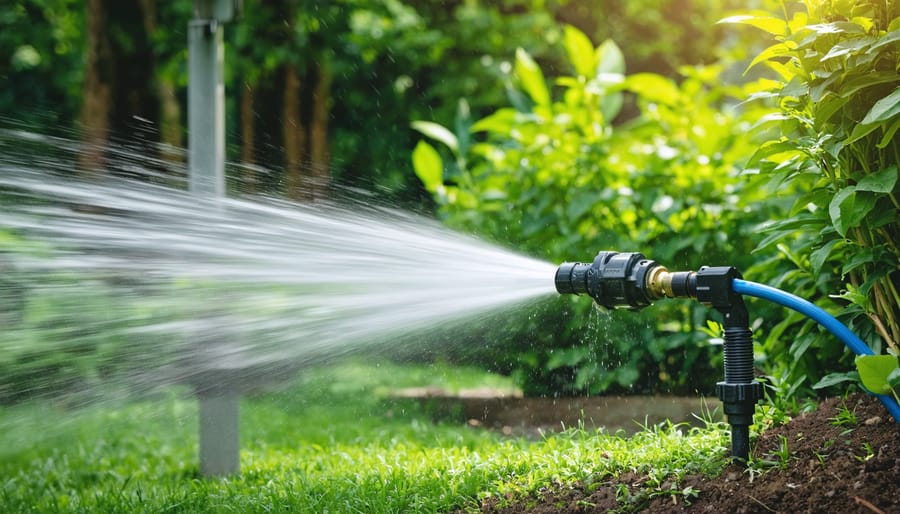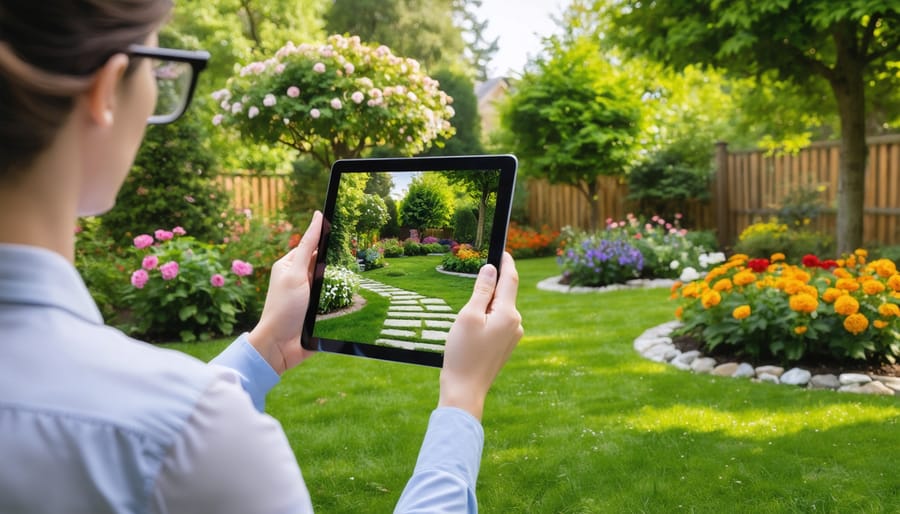Transform your gardening decisions with powerful soil data explorer tools, the latest evolution in smart garden technology. Map your garden’s soil composition, nutrient levels, and pH balance with precision using interactive digital maps that reveal hidden patterns beneath the surface. Access comprehensive soil databases containing decades of geological surveys, climate data, and agricultural research to understand your garden’s unique growing conditions. Analyze detailed soil reports instantly through user-friendly interfaces that translate complex data into practical growing recommendations, helping you select the perfect plants and amendments for your specific soil type. Whether you’re planning a new garden bed or troubleshooting growth issues, soil data explorers eliminate the guesswork from gardening, putting professional-grade soil analysis at your fingertips. By understanding your soil’s story through data, you’ll make informed decisions that lead to healthier plants, better harvests, and a more sustainable garden.
What a Soil Data Explorer Actually Does
Key Measurements and Readings
A good soil data explorer helps you measure and understand several crucial soil parameters that directly impact your garden’s health. The most fundamental reading is soil pH, which typically ranges from 1 to 14, with 7 being neutral. Most plants thrive in slightly acidic soil between 6.0 and 7.0.
Essential nutrient measurements include nitrogen (N), phosphorus (P), and potassium (K) – the famous NPK trio that powers plant growth. Your explorer will also measure secondary nutrients like calcium, magnesium, and sulfur, along with important micronutrients such as iron and zinc.
Soil moisture content tells you whether your garden needs watering, while electrical conductivity (EC) indicates the concentration of dissolved salts. Temperature readings help you determine when it’s best to plant, as most seeds need soil temperatures between 65-75°F to germinate properly.
Many modern soil explorers also measure organic matter content, which is vital for soil structure and fertility, and cation exchange capacity (CEC), which shows how well your soil holds onto nutrients. These readings help you make informed decisions about soil amendments and fertilization schedules.
Real-Time Analysis Features
One of the most exciting features of modern soil data explorers is their ability to provide instant readings right in your garden. As you insert the probe into your soil, these smart devices immediately analyze crucial factors like pH levels, moisture content, and nutrient availability. The real-time display shows easy-to-read measurements, often accompanied by color-coded indicators that help you quickly understand if your readings are within optimal ranges.
Many models also come with smartphone connectivity, letting you track changes over time and spot trends in your soil’s health. The instant interpretation feature is particularly helpful for beginners, as it often includes straightforward recommendations like “needs water” or “perfect for tomatoes” rather than just showing raw numbers. This immediate feedback helps you make quick decisions about watering, fertilizing, or amending your soil, taking the guesswork out of gardening.

Getting Started with Your Soil Explorer

Setting Up Your First Scan
Getting started with your first soil scan is easier than you might think! Begin by choosing a representative area of your garden – ideally, pick a spot that reflects the typical conditions of where you plan to grow your plants. Clear away any surface debris, leaves, or mulch to ensure direct contact with the soil.
Turn on your soil data explorer device and wait for it to calibrate (usually takes about 30 seconds). Once ready, insert the probe gently into the soil at a 90-degree angle, pushing it down to the recommended depth marked on your device (typically 4-6 inches). Hold the device steady and wait for the reading to complete.
For the most accurate results, take multiple readings in different spots of your garden. Try to test at least 3-5 locations within each growing area, spacing them about 5 feet apart. This helps create a more complete picture of your soil conditions.
Make sure to clean the probe between readings with a soft cloth, and record your results immediately in the companion app or your gardening journal. The best time for testing is when your soil is neither too wet nor too dry – aim for slightly moist soil conditions.
Understanding Your Results
When you receive your soil data results, focus first on the three key indicators: pH level, nutrient content, and soil texture. A pH between 6.0 and 7.0 is ideal for most garden plants, though some prefer more acidic or alkaline conditions. For nutrients, look at the NPK values (Nitrogen, Phosphorus, and Potassium) – these should typically fall within moderate ranges, with none severely lacking or overabundant.
Your soil texture readings will show percentages of sand, silt, and clay. A balanced mix, often called loam, is generally best for most gardens. Don’t worry if your soil isn’t perfect – these readings are your starting point for improvement, not a final verdict.
Color-coded maps and graphs in soil data tools make interpretation easier. Green usually indicates optimal conditions, while red might signal areas needing attention. Pay special attention to any dramatic variations across your garden space, as these could suggest areas requiring different treatment approaches.
Remember that soil conditions change seasonally, so it’s helpful to track readings over time. This allows you to spot trends and adjust your gardening practices accordingly.
Making Garden Decisions with Soil Data
Adjusting Your Soil Based on Results
Once you’ve gathered your soil data, it’s time to take action! The key is making targeted adjustments based on your readings. For acidic soil (pH below 6.0), gradually incorporate lime to raise the pH. If your soil is too alkaline (pH above 7.5), add sulfur or organic matter like pine needles to lower it. Remember, slow and steady wins the race – dramatic changes can shock your plants.
For nutrient deficiencies, organic amendments are your best friends. Low nitrogen? Work in composted manure or blood meal. If phosphorus is lacking, bone meal can help, while potassium-hungry soil benefits from wood ash or greensand. Many gardeners pair these adjustments with smart irrigation systems to ensure optimal nutrient absorption.
Sandy soil can be improved by adding organic matter like compost or aged manure to increase water retention. For clay soil, incorporate coarse sand and organic matter to improve drainage. The goal is to achieve that perfect loamy texture that both drains well and retains moisture.
Monitor your progress by retesting every few months. Keep a garden journal to track changes and plant responses. Remember that soil improvement is a journey, not a destination. Your patience will be rewarded with healthier plants and more abundant harvests.
Plant Selection Using Soil Data
Once you have your soil data in hand, selecting the right plants becomes much more scientific and successful. Think of it as matchmaking for your garden – pairing plants with their ideal soil conditions for the best possible growth outcomes.
Start by focusing on your soil’s pH level. If your soil data shows acidic conditions (pH below 7), consider acid-loving plants like blueberries, rhododendrons, and azaleas. For alkaline soils (pH above 7), lavender, clematis, and many herbs will thrive. Remember that while you can adjust soil pH, working with your natural conditions often leads to easier maintenance and healthier plants.
Soil texture and drainage information are equally important. Sandy soils are perfect for drought-resistant plants like sedums and yarrow, while clay soils support plants that need consistent moisture, such as asters and coneflowers. This data-driven approach helps you monitor plant health more effectively by preventing common issues before they arise.
Don’t forget to consider your soil’s nutrient levels. If phosphorus is low, choose plants that don’t require heavy feeding. If nitrogen is abundant, leafy vegetables and grass will flourish. By aligning your plant choices with your soil’s natural characteristics, you’ll create a more sustainable garden that requires less intervention and provides better results.

Understanding your soil through data exploration tools is a game-changer for any gardening enthusiast. These powerful resources combine scientific accuracy with user-friendly interfaces, making it easier than ever to create thriving gardens based on solid data rather than guesswork. By utilizing soil data explorers, you can make informed decisions about plant selection, soil amendments, and garden planning that lead to better results and healthier plants.
The benefits are clear: reduced water waste, optimized fertilizer use, and increased crop yields. Plus, you’ll save time and money by avoiding common mistakes and implementing targeted solutions for your specific soil conditions. Whether you’re growing vegetables, maintaining a flower garden, or starting a new landscaping project, soil data explorers provide the insights you need to succeed.
Ready to take your gardening to the next level? Start by exploring these tools today. Test your soil, input your data, and watch as a world of possibilities opens up. Remember, successful gardening begins from the ground up, and understanding your soil is the first step toward creating the garden of your dreams. Your plants will thank you, and you’ll enjoy the satisfaction of growing with confidence and purpose.




